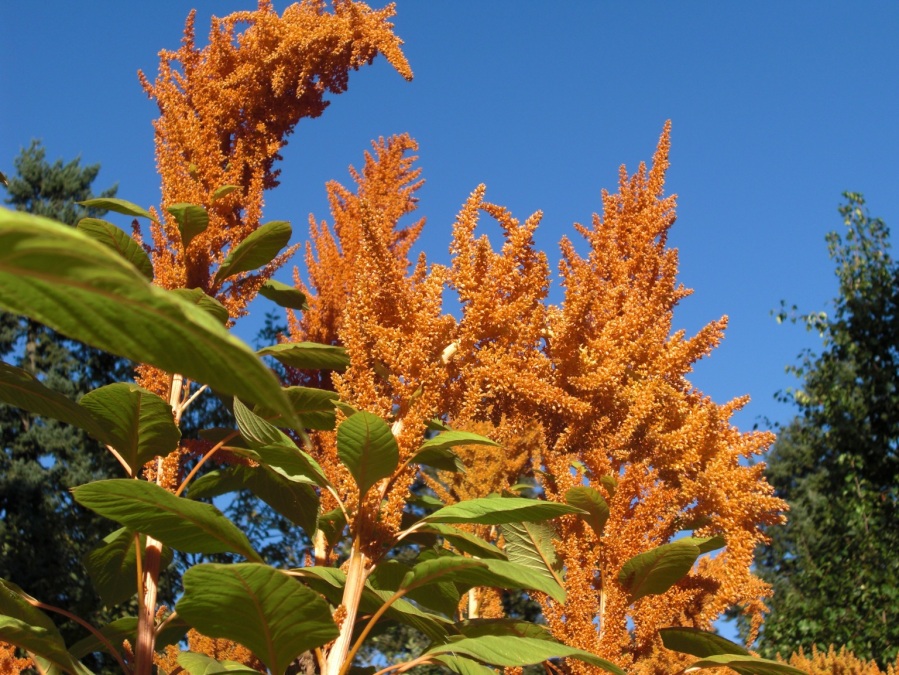 Of
all the grain crops, amaranth has to be the easiest to turn into
something that you can eat. If you have ever wondered how to add a
cereal crop to your garden, consider amaranth. This versatile,
beautiful, and easy to grow plant can add another dimension to
gardening. Unlike wheat or oats, where you need to cut the stalks,
thresh the grain and then grind it into flour, amaranth literally falls
from the seed heads ready to eat.
Of
all the grain crops, amaranth has to be the easiest to turn into
something that you can eat. If you have ever wondered how to add a
cereal crop to your garden, consider amaranth. This versatile,
beautiful, and easy to grow plant can add another dimension to
gardening. Unlike wheat or oats, where you need to cut the stalks,
thresh the grain and then grind it into flour, amaranth literally falls
from the seed heads ready to eat.
I started this experiment last year with a small test crop just to get an idea of what to expect. Andrew Still of the Seed Ambassadors
spoke highly of amaranth and gave me a few seeds of Copperhead, an
ornamental yet grain producing variety. There are two or three species
of grain amaranth, Amaranthus caudatus, and Amaranthus cruentus
(Copperhead is this species) being the most important, each of which
encompasses many varieties. Most of the amaranth varieties have purple
or red hues in the plant stalks and leaves as well as brilliantly
colored flowers. Copperhead is an exception with rust and copper tones
in the stems and flowers. The common commercial variety called
Plainsman is a hybrid of two other species, Amaranthus hypochondriacus, from Mexico and Amaranthus hybridus,
from Pakistan.
